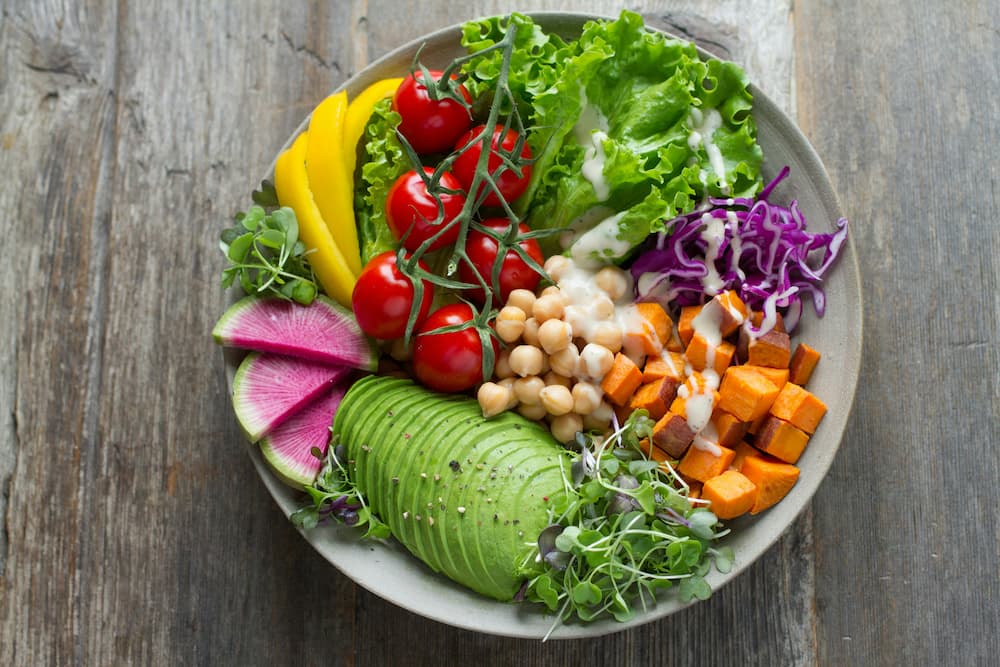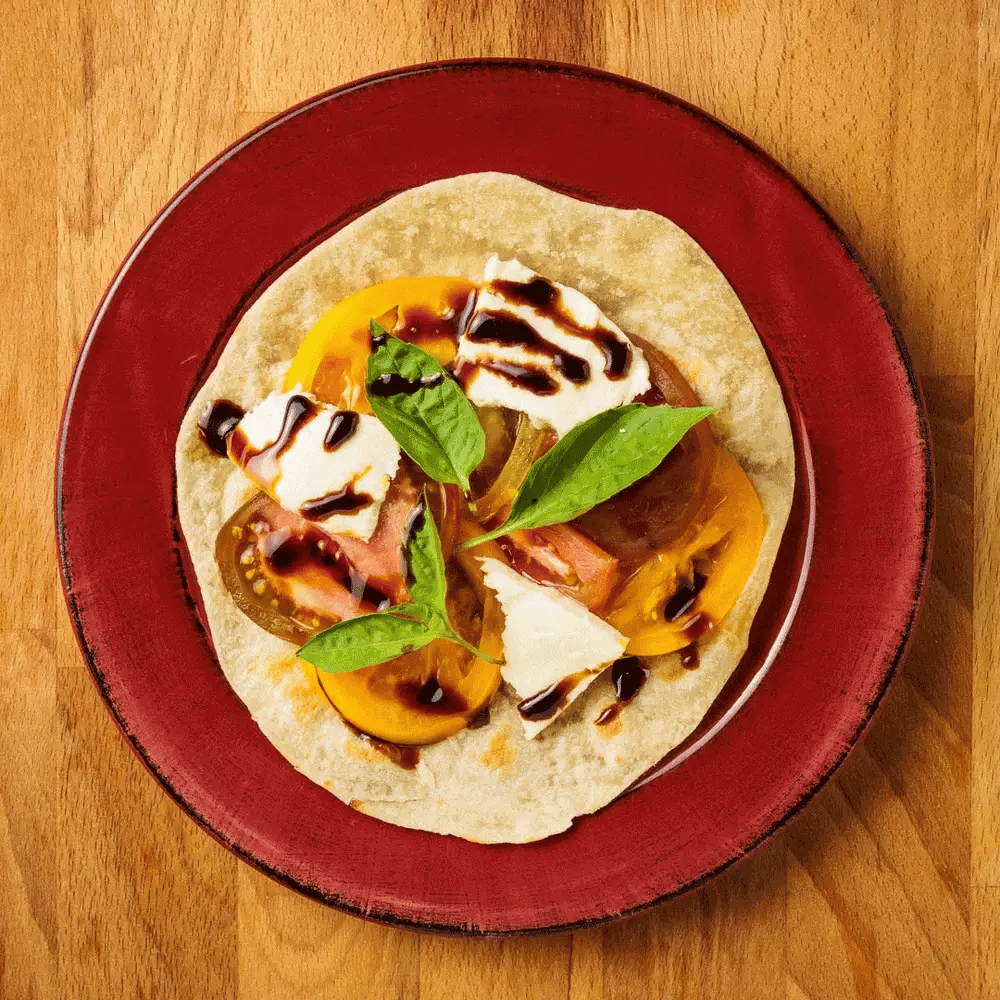Your gut is more than a digestion station. It’s a bustling ecosystem that influences energy, immunity, mood, and more. The foods you choose (and the order you eat them) can make a real difference in how you feel after meals and over time. Use this simple, gut-friendly framework to build plates that are satisfying, steadying, and easy to repeat.
The order that matters: fiber → protein → carbs
Think of your meal like a three-act play:
Act I: Vegetables/salad (fiber first). Start with leafy greens or crunchy veg. Fiber slows digestion, tempers post-meal blood sugar swings, and feeds beneficial gut microbes.
Act II: Protein. Follow with grilled chicken or fish, tofu or tempeh, eggs, beans, or lentils. Protein adds staying power and helps you feel fuller, longer.
Act III: Carbs/starches last. Enjoy rice, tortillas, pasta, potatoes, or bread after fiber and protein, so your body handles them more smoothly.

About that bread basket…
Diving into white bread on an empty stomach is a quick route to a glucose spike and an even quicker crash, plus you’ll be partially full before fiber and protein hit the plate. If you want bread, have it after the veg and protein, or pick a whole-grain option and keep the portion modest.
Why fiber is your gut’s MVP
Your microbiome, which is made up of trillions of helpful bacteria in your digestive tract, lives on fiber. In particular, prebiotic fibers in plants like garlic, onions, leeks, asparagus, artichokes, beans, and whole grains act like fuel for these microbes. As they ferment fiber, they produce short-chain fatty acids that help maintain a healthy gut lining and may calm inflammation. Fill about half your plate with veggies most days, and add legumes or whole grains daily.
Gut-friendly fiber ideas
- Salad starters: arugula + fennel with olive oil and lemon
- Warm sides: roasted broccoli, Brussels sprouts, or sautéed greens
- Hearty add-ins: chickpeas, black beans, lentils, farro, quinoa
- Fruit finish: berries, kiwi, or a few dates with nuts

Follow fiber with protein
After your salad or veg starter, move to protein. Whether you’re eating salmon, eggs, tofu, chicken, or beans, protein supports steady energy, muscle repair, and satiety. It also slows the absorption of the carbs you eat next, which means fewer peaks and valleys, more stable focus, and mood.
Save carbs for last (don’t skip them!)
Carbs taste great and fuel you, but timing matters. When you eat them after fiber and protein, you’ll likely notice smoother energy and less post-meal sleepiness. Choose smarter carbs most of the time: whole-grain bread or tortillas, brown rice, quinoa, potatoes with the skin, and fruit.
Slow down and chew
Gut health isn’t only about ingredients. How you eat counts, too. Eating more slowly gives your digestive system time to signal satisfaction, which naturally supports portion control. Chewing thoroughly also helps your gut do its job. Try setting down your fork between bites, taking a breath, and giving yourself 15–20 minutes before deciding on seconds.

Variety = vibrant microbiome
A diverse plant intake is linked with a more diverse microbiome, which is the hallmark of gut resilience. A useful, doable target is around 30 different plant foods per week (fruits, vegetables, herbs, legumes, nuts, seeds, whole grains, even spices). Rotate your beans, mix your greens, and keep a few frozen veggies on hand so variety is always within reach.
Quick & flavorful plate combos
Lunch: Crunchy chopped salad (cabbage, carrots, scallions, cilantro), grilled chicken or tofu, and a warm Rise & Puff tortilla on the side or wrapped around the filling.
Weeknight dinner: Roasted broccoli with lemon, salmon or bean patties, and a small scoop of brown rice or potatoes.
Quick fix: Veg soup or raw veggie plate, egg bites or hummus, and whole-grain toast.
Common pitfalls and simple pivots
- Bread basket before the meal. Ask for olives or a side salad first, and enjoy bread after.
- Veggies as an afterthought. Make them the first course.
- Racing through meals. Set a tiny timer for 15 minutes; breathe, chew, enjoy.

Takeaways you can use tonight
- Open with fiber. Salad/veg first, every time.
- Anchor with protein, then add carbs last for steadier energy.
- Choose smarter carbs most of the time (whole grains over refined).
- Eat slowly and pause for a second.
- Mix it up: aim for about 30 different plant foods each week.
Eat for how you want to feel. Put this rhythm on repeat.
It’s a tiny tweak that turns every meal into feel-good fuel!
Sources
- Shukla AP et al. Diabetes Care. Food order (vegetables/protein before carbs) and post-meal glucose/insulin.
- Tricò D et al. Randomized trials on “carbohydrate-last” patterns and glycemic response.
- Harvard T.H. Chan School of Public Health – Fiber types and benefits; refined carbs and glycemic impact.
- Cleveland Clinic – How to eat for gut health (practical tips on fiber, variety, and pace).
- American Gut Project – Greater plant variety linked with higher microbial diversity.

















Leave a comment
All comments are moderated before being published.
This site is protected by hCaptcha and the hCaptcha Privacy Policy and Terms of Service apply.